
South Medford is the southern neighborhood of Medford, Massachusetts.
Cambridge College is a private college based in Boston, Massachusetts. It also operates regional centers in Lawrence, Massachusetts, Springfield, Massachusetts, Guaynabo, Puerto Rico, and Rancho Cucamonga, California. There is also a regional center in Memphis, Tennessee.
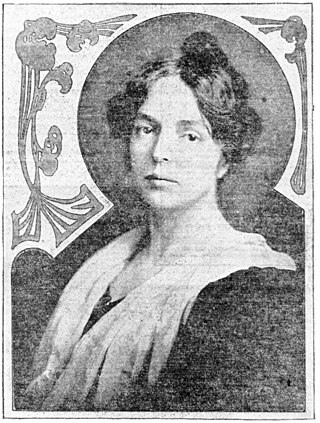
Theo Alice Ruggles Kitson, also known as Tho. A. R. Kitson and Theo Alice Ruggles, was an American sculptor.
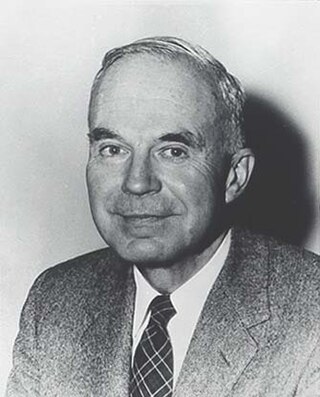
Walker Kirtland Hancock was an American sculptor and teacher. He created notable monumental sculptures, including the Pennsylvania Railroad World War II Memorial (1950–52) at 30th Street Station in Philadelphia, and the World War I Soldiers' Memorial (1936–38) in St. Louis, Missouri. He made major additions to the National Cathedral in Washington, D.C., including Christ in Majesty (1972), the bas relief over the High Altar. Works by him are presently housed at the U.S. Military Academy at West Point, the Library of Congress, the U.S. Supreme Court, and the United States Capitol.

Shawmut Peninsula is the promontory of land on which Boston, Massachusetts was built. The peninsula, originally a mere 789 acres (3.19 km2) in area, more than doubled in size due to land reclamation efforts that were a feature of the history of Boston throughout the 19th century.

The Uncle Sam Memorial Statue is a statue commemorating Samuel Wilson, perhaps the original Uncle Sam, near his birthplace in the center of Arlington, Massachusetts, United States. It was sculpted by Theodore Cotillo Barbarossa. It is located on Mystic Street, across from the Cyrus Dallin Art Museum, and adjacent to the Minuteman Bikeway.
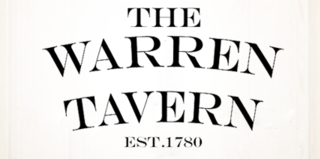
The Warren Tavern is reportedly one of the oldest taverns in the state of Massachusetts and one of the most historic watering holes in America. The Warren Tavern was founded in 1780 in Charlestown, Massachusetts and still stands in that block of land today. In the early years of the Warren Tavern it was frequented by many American Revolutionary War heroes such as Paul Revere, Benjamin Franklin, and George Washington.

Boston Harborwalk is a public walkway that follows the edge of piers, wharves, beaches, and shoreline around Boston Harbor. When fully completed it will extend a distance of 47 miles (76 km) from East Boston to the Neponset River.
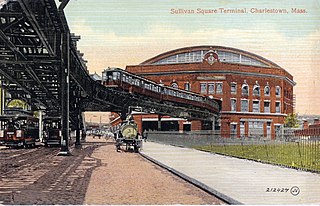
Sullivan Square is a traffic circle located at the north end of the Charlestown neighborhood of Boston, Massachusetts. It is named after James Sullivan, an early 19th-century Governor of Massachusetts. Sullivan Square station on the MBTA Orange Line is located just west of the square.

Massachusetts Homeopathic Hospital was a homeopathic institution in Boston, Massachusetts, at which the first successful kidney removal in New England was performed. Established by an act of the Massachusetts legislature in 1855, the hospital opened its doors in 1871 at a site in Jamaica Plain. In 1874 it moved into a newly built facility in the South End of Boston. Over the next 30 years its facilities in that area were expanded, and in 1908 it opened a satellite facility in Brighton for the treatment of contagious diseases. The hospital eventually abandoned homeopathic practices, and in 1929 became part of Massachusetts Memorial Hospitals. This was eventually merged into the Boston University Medical Center, now part of Boston Medical Center. The hospital's main building survives, and is known as the Talbot Building; it now houses the Boston University School of Public Health.

Firemen’s Memorial is a statue located in Forest Hills Cemetery, Jamaica Plain, Boston.
A World War I Memorial by Albert Henry Atkins is installed in Adams Square, in Boston, Massachusetts, United States. The 1922 stone memorial is approximately 8 x 12 x 1 ft. and features a relief of a standing female in classical attire. An inscription on the front reads: 1917-1918 / ROSLINDALE HONORS ITS VICTORIOUS SONS AND DAUGHTERS IN WORLD WAR I IN THE GLORY OF THEIR YOUTH WE SHALL REMEMBER THEM / ROSLINDALE HONORS THE MEN AND WOMEN WHO SERVED IN KOREA AND VIETNAM. The artwork was surveyed as part of the Smithsonian Institution's "Save Outdoor Sculpture!" program in 1997.
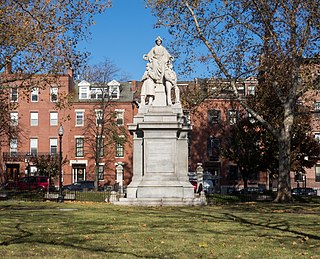
The Charlestown Civil War Memorial, also known as the Soldiers' and Sailors' Monument, is an outdoor granite monument and sculpture by Martin Milmore, commemorating the men of Charlestown, Boston, who fought to preserve the Union during the American Civil War. The memorial is installed in the Training Field in Charlestown, in the U.S. state of Massachusetts.

The World War II Memorial by John Francis Paramino is installed in Boston, Massachusetts, United States. It was completed during 1947–1949, copyrighted in 1948, and erected in 1949. The bronze and granite war memorial features an allegorical statue of winged female figure of Victory. Behind her is a wall with 27 bronze plaques listing the names of people who died in World War II. The work was surveyed as part of the Smithsonian Institution's "Save Outdoor Sculpture!" program in 1993.

A statue of American Revolutionary War hero William Prescott by William Wetmore Story is installed next to the Bunker Hill Monument in Charlestown, Boston, Massachusetts, United States.

Boston Public Garden Flagpole Base is a 1921 flagpole base, memorial, and sculpture by William D. Austen, installed in Boston Public Garden, in Boston, Massachusetts, United States. The bronze base measures approximately 6 x 4 x 4 ft., and rests on a granite plinth that measures 3.5 x 7 x 7 ft. It has four facades with reliefs depicting American eagles holding branches and spreading their wings, and serves as a World War I memorial. The base replaced another destroyed by lightning in 1920. It was originally installed at the site of the original base, at the intersection of Boylston Street and Arlington Street, but was moved to its present location in 1933. The work was surveyed by the Smithsonian Institution's "Save Outdoor Sculpture!" program in 1993.

The George Thorndike Angell Memorial is a monument commemorating George Thorndike Angell in Boston, Massachusetts. The fountain and 7,500 square foot plaza were designed by the firm of Peabody & Stearns in 1912. The work was surveyed by the Smithsonian Institution's "Save Outdoor Sculpture!" program in 1997.

The World War II Memorial is installed in City Square Park, in Charlestown, Boston, Massachusetts, United States.

Charlestown Veterans Memorial Park is a park in Charlestown, Boston, Massachusetts, United States. The park has memorials commemorating Korean War and Vietnam War veterans.
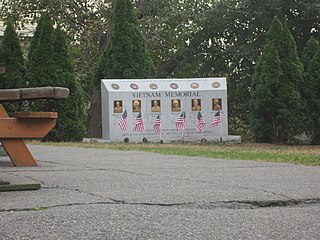
The Charlestown Vietnam Veterans Memorial is a war memorial commemorating six local men who died who during the Vietnam War, installed outside Veterans Memorial Hall in Charlestown, Boston, in the U.S. state of Massachusetts. The memorial was dedicated in April 2009.



















